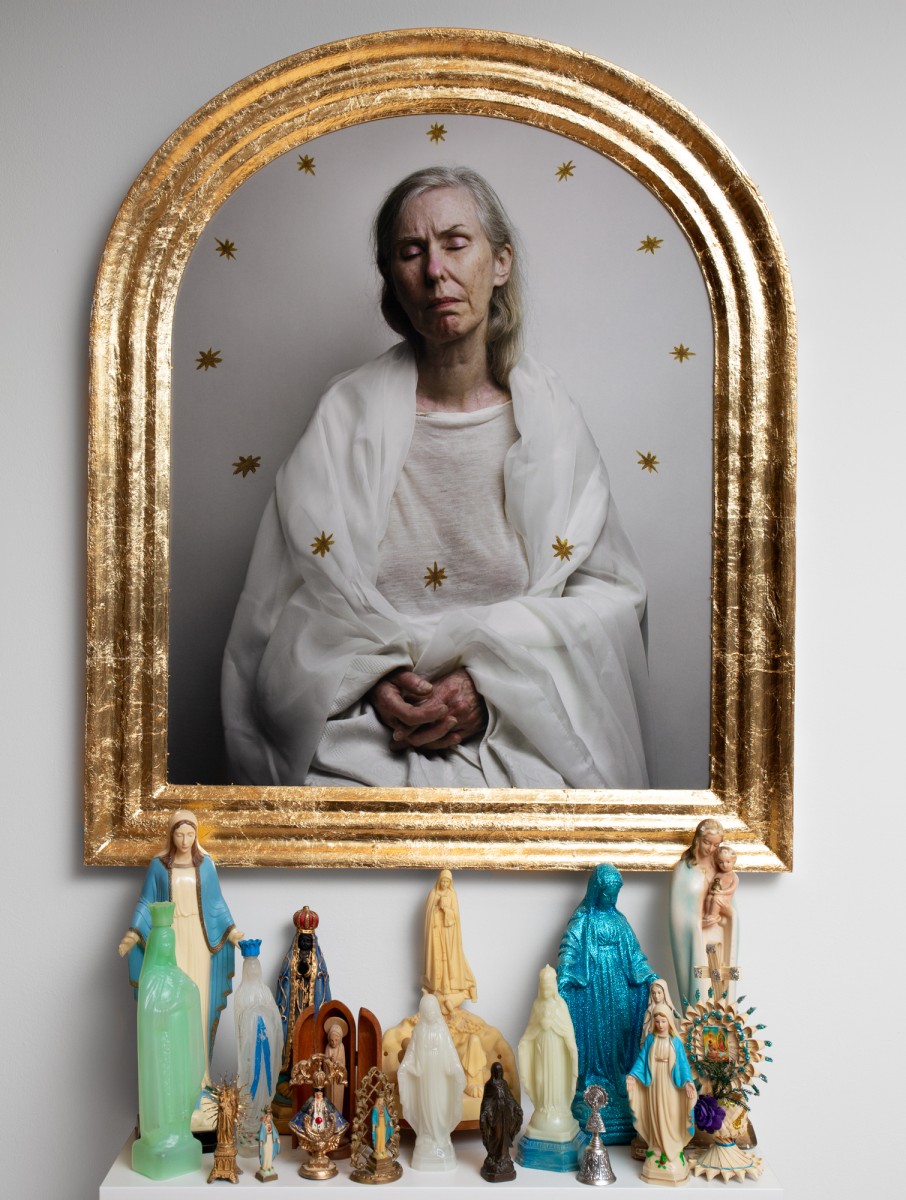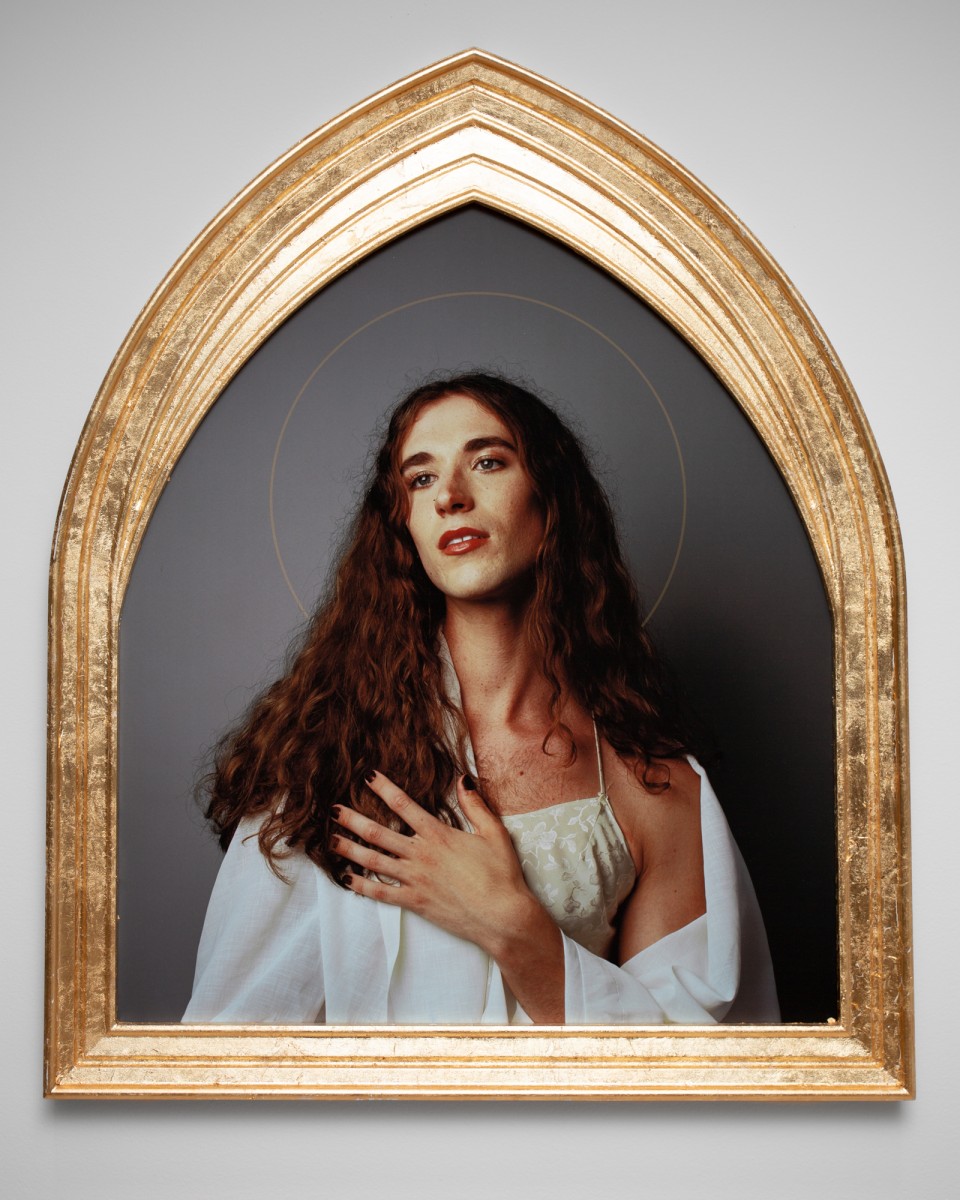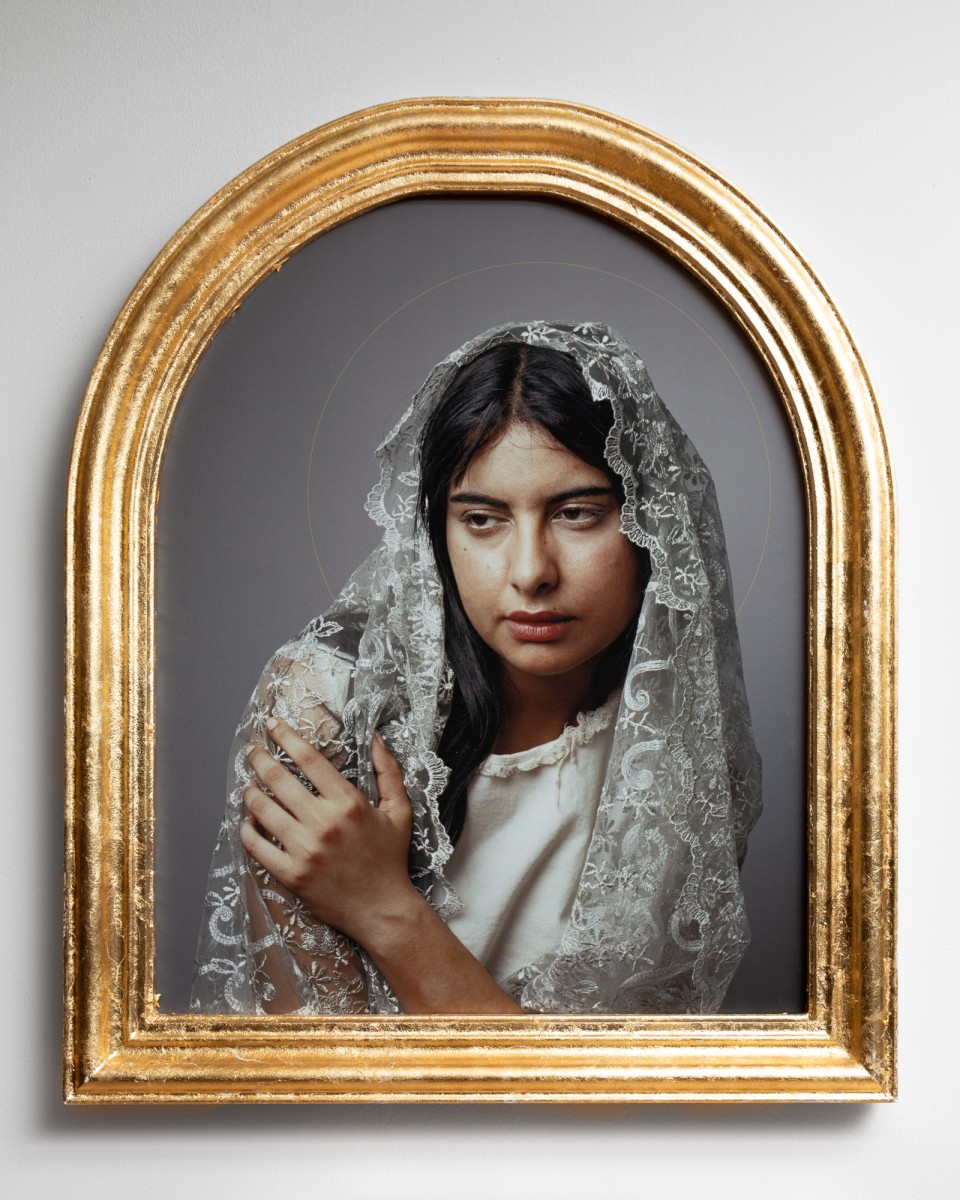Olivia Johnston
Through photography, Olivia Johnston explores the idea that holiness can exist in a secular way.
Olivia Johnston, Mater Dolorosa (Angela) (2017). Pigment ink print on cotton rag paper, custom-made MDF frame and hand-applied imitation gold leaf. 32 in x 27 in x 1 in.
Based in Ottawa, lens-based artist Olivia Johnston creates both photographic and multimedia work, incorporating elements of studio portraiture, landscape, self-portraiture and still life. An instructor and Operations Manager at the School of the Photographic Arts: Ottawa (SPAO), her works explore gender, beauty, the self, memory, art history and the photographic image itself.
Her recent series Saints and Madonnas stemmed from a growing interest in depictions of the Virgin Mary, and the golden halo that more often than not encircles her face. Fascinated with the many representations of the Virgin throughout history, Johnston considers how the Virgin might look was she to walk among us. Believing a kind of holiness can exist in our neutral society, Johnston seeks to identify and recast the holiness, sacredness and magic that exist in every individual through these photographs.
Johnston was recently honoured with the RBC Emerging Artist Award (2019), the 2019 Magenta Foundation's Flash Forward program (2019) and Grand Prize Winner of the Figureworks exhibition (2018); she was shortlisted for the New Generation Photography Award in 2018 and 2020.
AGO: What was the inspiration for this artwork or series?
Johnston: The ideas that led me to create this body of work emerged from my time spent completing a Bachelor’s degree in Art History. The history of art, while often seeming to be tucked away in stuffy institutions and kept away from everyday life, is more relevant than ever in informing us about ourselves, our tendencies, our lives and our culture. Works representing some kind of Biblical narrative is ever-present in art history and as such function as a very tangible representation and a reminder of the culture that was, until very recently, a very religious one. Many people throughout history, unable to read and write, relied on these visual works to teach them the stories of the Bible; Pope Gregory declared the paintings on church walls “the Bible of the illiterate.” However our individual relationships with the church now tend to be fraught with complexity and tension, even tragedy. I was raised in an extremely secular household; there were no weekly visits to church, no Sunday school, no Bible study. I am convinced, however, that Christianity has shaped the way I think about myself, exist in the world and interact with others. The idea that holiness can exist in a secular way is beautiful to me - it connects us to ideas that are older and yet still relevant in contemporary life, ideas about magic, dreams, visions and hallucinations.
AGO: Tell us about a place or a space where you most love making your work?
Johnston: Because much of my work is produced in the studio or in a studio environment, I usually require a small intimate space where I can keep a light, a chair and a backdrop. I’ve had many home studios over the years, and so I know first-hand how important it is to have a space where you’re surrounded by objects and images that inspire you as well as having the equipment that makes it possible to do your work. Currently, I am lucky enough to be able to rent a studio in Ottawa’s Centretown. I share my studio with my friend Gillian King, a painter whose work is very different from mine but our working styles and personalities match perfectly. When I go to the studio and I’m able to see the work she’s making, I find myself totally energized and inspired. I spend a huge amount of time looking at computer screens; having a space where I can take photographs as well as engage with the hands-on, tactile aspects of my practice, is a real blessing.
AGO: Are you in dialogue with any other artists or creative peers about your practice? If so, how does this dialogue feed your work?
Johnston: Being a visual artist is a tough gig -- we are so often isolated from others in the making process. I really believe strongly in the power of community in keeping my practice productive and rewarding. As such, I consider the people around me to be an essential part of my artistic practice; I have a number of close friends in similar stages of their art careers with whom I can discuss ideas, brainstorm challenges, and celebrate successes. So much of the best work I’ve made and the most important lessons I’ve learned about being an artist have come from collaboration with other artists including Jennifer Stewart, Magida El-Kassis, Regreta Brown, Jamie Kronick, Shaya Ishaq, Jocelyn Keays, Amy Thompson, Kristina Corre, Kosisochukwu Nnebe, Whitney Lewis-Smith, and Neeko Paluzzi, among others. I also work at the SPAO Centre in Ottawa, where I teach and work in the office. Being around creative people, seeing the work they’re making, as well as having continual conversations about the nature of images and image-making keeps my creative self refreshed and keeps ideas flowing.
Follow Olivia Johnston on Instagram @olijohn, on Twitter @johnstonolivia and click here for her Facebook page.



